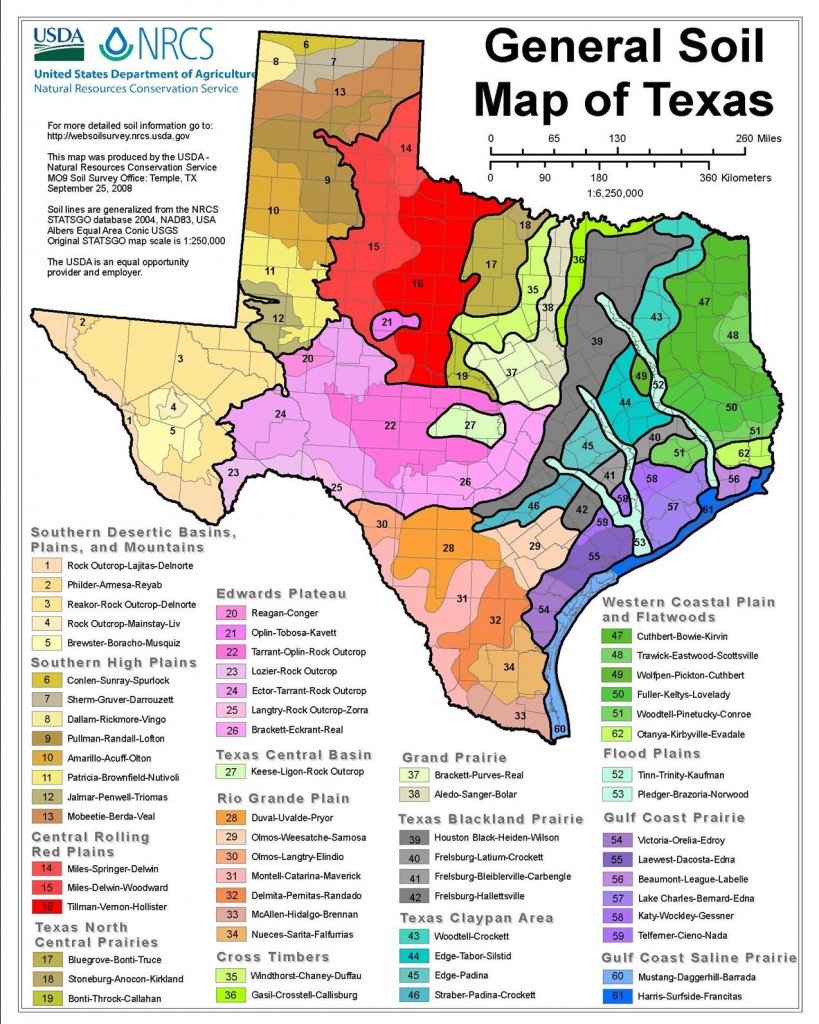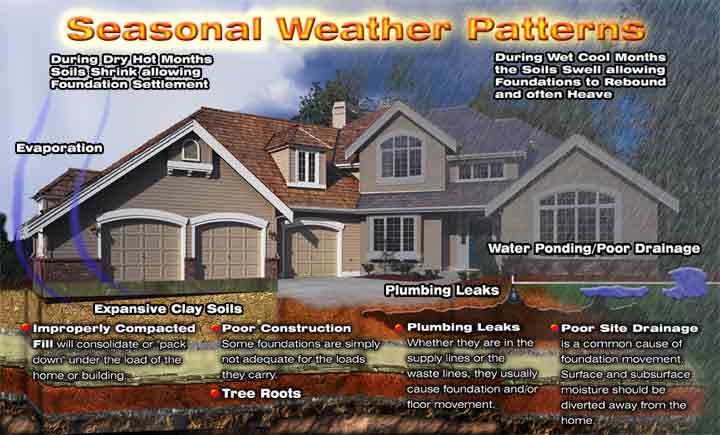DRAINAGE
A GUIDE TO SOIL MOISTURE & FOUNDATION DAMAGE
Foundation problems can be caused by loose soil, too much or not enough water and many other reasons.
If all the soil beneath a foundation swells uniformly or shrinks uniformly, it is unlikely to cause a problem. But when only part of the foundation heaves or settles, differential movement causes cracks and other damage.
Water is the main enemy in expansive soils problems. There is either too much water, causing the soil to swell, or not enough, causing the soil to shrink.
Most differential movement is caused by differences in soil moisture. After construction, soil beneath some parts of the foundation may become wetter or drier than the rest of the soil.


THE IMPORTANCE OF DRAINAGE
Here in Texas with our long, hot, dry summers, most people know that drought conditions can damage foundations. The dry soil and clay shrinks out from under your home removing the foundation’s proper support. But actually, ground moisture is a double edged sword. While too little water content in the soil around your home can be hazardous, too MUCH water can be harmful too. Especially if surface water pools in only one or two areas around your home. As the dirt and clay begins to adsorb the water it begins to expand causing your foundation to heave, or rise above its proper level. If the clay doesn’t expand evenly around the perimeter of your house, the rising during wet periods and the settling during dry spots causes undue stress on the foundation as it goes above and below its normal position.
WHEN THERE IS A GAIN IN SOIL MOISTURE:
This is the most serious threat since the swelling potential of expansive soils is much greater than the shrinkage potential. Moisture gain can come from plumbing leaks, subsurface water like wet weather or a high water table, or surface water. Surface water is improper drainage of landscape water or rainwater.
Poor drainage can be a major contributor to soil moisture gain. Roof runoff should be directed away from the house through the use of gutters. Gutter downspouts should not discharge water next to the foundation. Drainage solutions may be required in order to control or prevent damages caused by excess water.



French Drain VS Surface Drain
The two most commonly used solutions for Drain Systems are Surface Drainage with Catch Basins and French Drains. The primary difference between the two systems is that French drains are used for water that is gradually seeping below ground level while surface drains handle water that’s collecting above the ground.
A Surface Drain is used to divert water away from the foundation to one location quickly- in such cases of a high volume down pour of rain. Surface drains should be installed in areas where water pools around your foundation. If your yard slopes toward your foundation, surface drainage is used to collect the accumulated water, using catch basins. Solid pipes will then carry water away from your foundation. Your downspouts of your gutters should be tied into your surface drain system as well. Surface drainage next to the foundation should slope away from the house approximately ¼ inch per foot.
French Drains are best used to remove water from over-saturated sub surface soil. If your yard is flat, a French drain is your best solution. Trenching is required when installing a French drain. French drains consist of a perforated pipe surrounded by a gravel covered trench that allows water to the path of least resistance. The drain must be installed below the bottom of the foundation in order to effectively wick the moisture away from the foundation. It is very common to see a sump pump connected to a French drain system.
In some instances, a Swale or a Berm can be created to divert storm water away from the foundation. A Swale is formed by digging a gently sloped trench to a designated pathway away from the foundation. A Berm usually uses the excess soil mounded around the pathway of the trenched swale. This is a less complex solution and is usually temporary as opposed to a drain system installation.

QUALITY WE GUARANTEE. QUALITY YOU CAN TRUST.
Your home is one of your most valuable assets. When it comes time to repair a home, we offer the most advanced technology available, installed by an experienced team and backed by the industry’s leading warranty.

Schedule Your No-Charge Estimate
Whether you are a homeowner or a realtor with deadlines, we are determined to make the repair process meet your every need. Contact us now and let’s get started!
